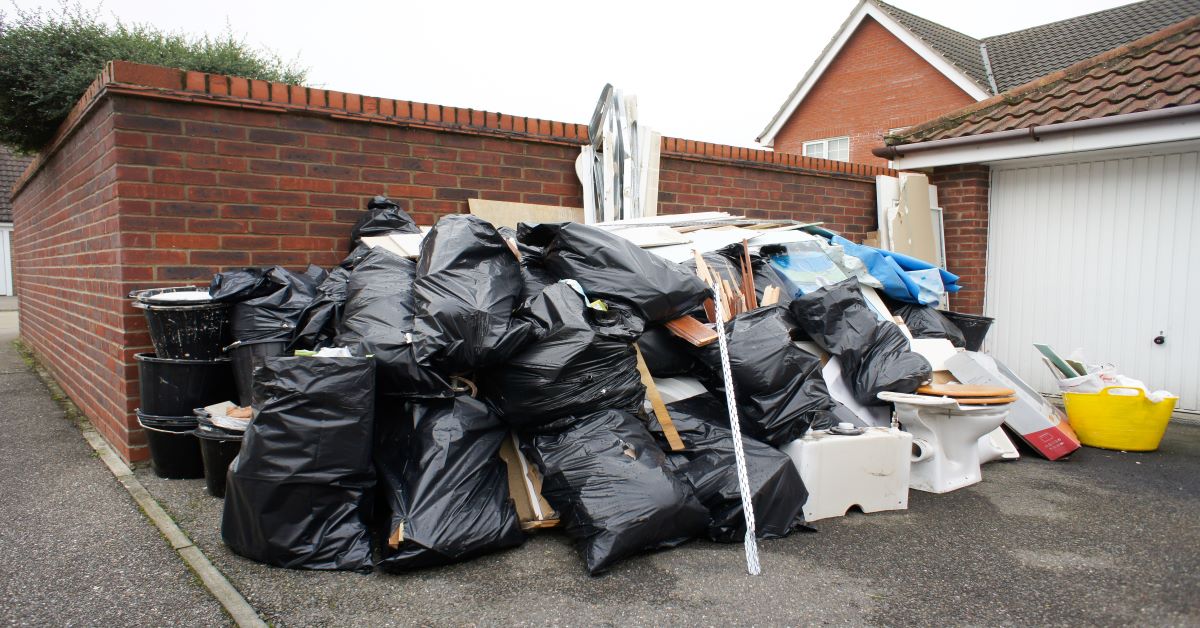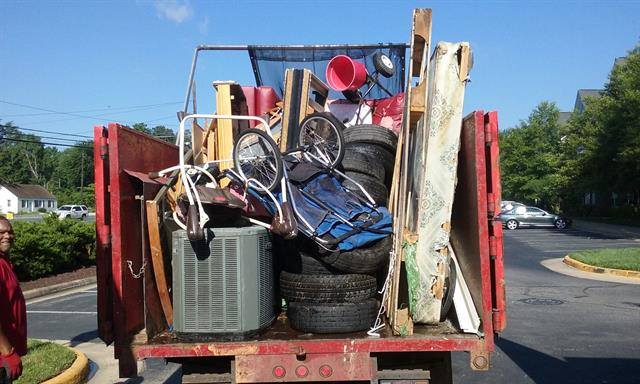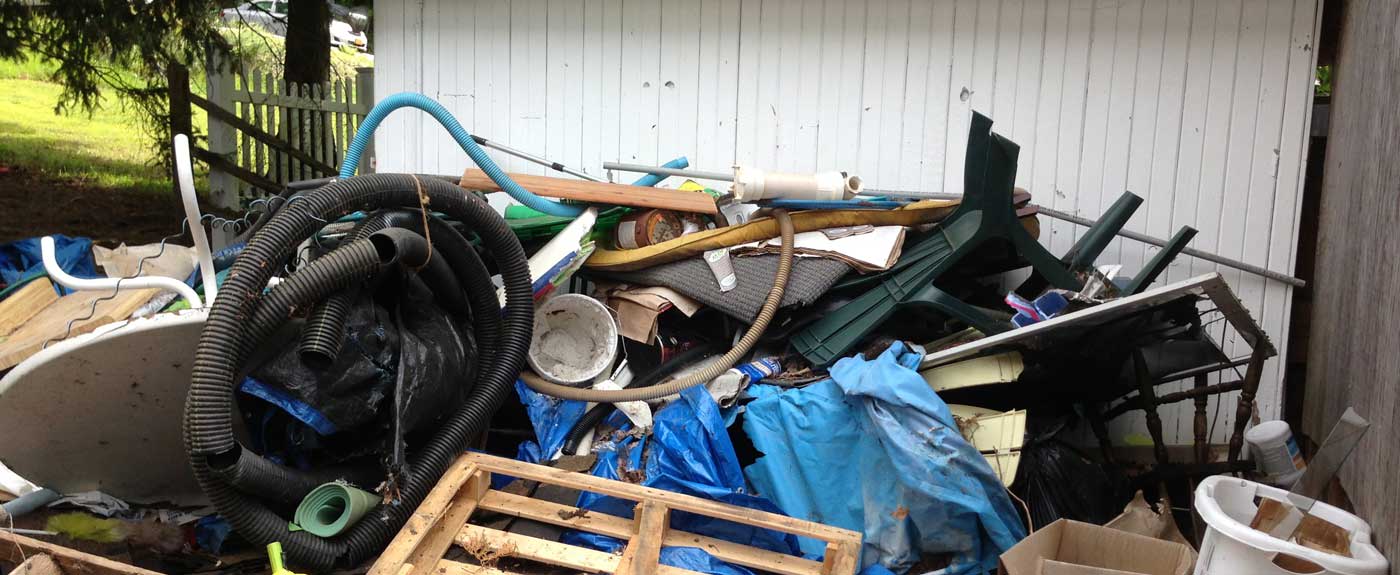Atlanta Waste Disposal: Eco-Friendly and Liable Solutions
Atlanta Waste Disposal: Eco-Friendly and Liable Solutions
Blog Article
Specialist Waste Administration Strategies Customized for Industrial Settings
Customizing waste administration techniques to match the special needs of industrial setups is not just useful but necessary for preserving operational efficiency and environmental sustainability. The pursuit for enhanced waste administration in commercial settings entails a thorough strategy that balances governing conformity, cost-effectiveness, and eco-friendly obligation.
Value of Tailored Waste Administration
Tailored waste monitoring practices are vital in industrial setups to maximize source use and lessen ecological impact. Industrial operations generate a significant amount of waste, ranging from strong by-products to chemical pollutants, posing a threat to the setting otherwise managed successfully (Furniture removal Atlanta). By personalizing waste monitoring methods to fit the particular needs and obstacles of each commercial center, firms can not only adhere to policies yet likewise improve operational efficiency and sustainability
One trick element of tailored waste monitoring is carrying out a detailed waste assessment to recognize the types and volumes of waste created. This evaluation permits firms to apply targeted services such as recycling programs, waste segregation methods, and waste-to-energy initiatives. By recognizing the make-up of their waste streams, industrial facilities can create economical strategies to minimize waste generation at the source, resulting in lasting environmental benefits.

Kinds Of Industrial Waste
What are the different groups of commercial waste typically generated in manufacturing procedures? Industrial waste can be classified into a number of primary groups based upon its make-up and qualities. Contaminated materials is one of one of the most critical types, including chemicals, solvents, heavy steels, and various other products that posture a threat to human wellness or the setting. This classification commonly needs special delivery and disposal techniques to prevent contamination and guarantee security.
One more typical kind of hazardous waste is non-hazardous waste, which incorporates products like paper, plastics, and product packaging waste. While non-hazardous waste may not present instant threats, appropriate monitoring is still important to decrease garbage dump usage and advertise recycling and sustainability methods.

Hazardous Waste Handling Procedures
Effective monitoring of hazardous waste in commercial setups demands strict adherence to established dealing with procedures to mitigate dangers and ensure ecological safety and security. Hazardous waste handling procedures entail several crucial actions to lessen the possible effect on human health and the environment.
Second of all, when determined, dangerous waste must be meticulously segregated from non-hazardous waste to avoid contamination and make certain appropriate therapy. Storage space of contaminated materials should follow guidelines pertaining to containment, labeling, and compatibility to stop leaks, spills, or other cases that can threaten employees or the environment.
In addition, dealing with treatments need to consist of using individual protective devices, staff member training, and emergency situation action procedures. Normal evaluations, monitoring, and paperwork of contaminated materials handling tasks are crucial to preserving conformity and identifying areas for renovation. By adhering to these structured procedures vigilantly, commercial facilities can successfully take care of contaminated materials and copyright their dedication to environmental stewardship.
Applying Effective Reusing Practices

To implement efficient reusing techniques, commercial facilities ought to first conduct a waste audit to determine the types and amounts of recyclable products created in their operations. Based upon this audit, firms can after that establish marked recycling terminals, offer suitable training to staff members on appropriate sorting strategies, and work together with trusted recycling companions for the collection and processing of products. Additionally, setting specific recycling objectives, tracking progress, and consistently communicating with personnel about the relevance of recycling are important actions to make certain the success and sustainability of recycling initiatives in commercial setups.
Tracking and Continual Enhancement
To ensure the effectiveness and sustainability of waste administration approaches in industrial settings, the implementation of durable tracking and constant enhancement procedures is necessary. Tracking involves monitoring vital efficiency indications (KPIs) such as waste generation prices, reusing percents, and disposal expenses. Regularly assessing these metrics enables businesses to recognize areas for enhancement and measure the success of implemented waste monitoring efforts.
Continual enhancement is necessary for refining procedures over time. It includes examining keeping an eye on data, recognizing inadequacies, and executing adjustments to optimize waste administration practices better. This iterative approach cultivates a culture of recurring improvement and advancement within the organization.
Using modern technology like waste monitoring software application and IoT sensing units can improve keeping track of efforts, offering real-time data for educated decision-making. Staff member training and engagement also play a crucial function in making sure the success of monitoring and continuous improvement efforts, as frontline staff are usually principals in waste monitoring procedures.
Verdict
Finally, customized waste monitoring approaches are crucial junk metal pick up for industrial setups to properly handle various sorts of waste, consisting of hazardous materials. By implementing reliable recycling practices and constantly tracking and boosting waste monitoring processes, industries can reduce their environmental impact and make sure compliance with guidelines. It is crucial for business to focus on waste management to safeguard the atmosphere and promote sustainability in their operations.
Report this page